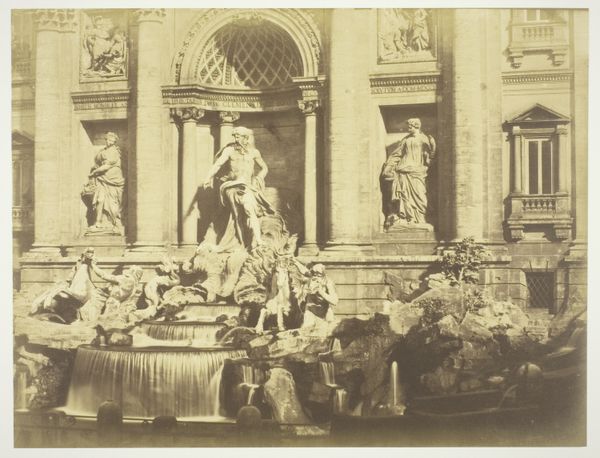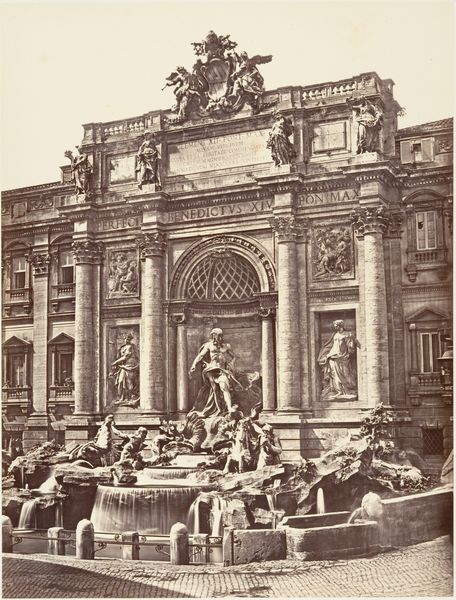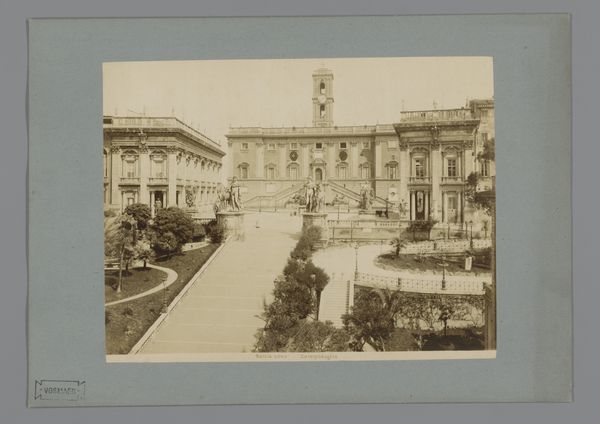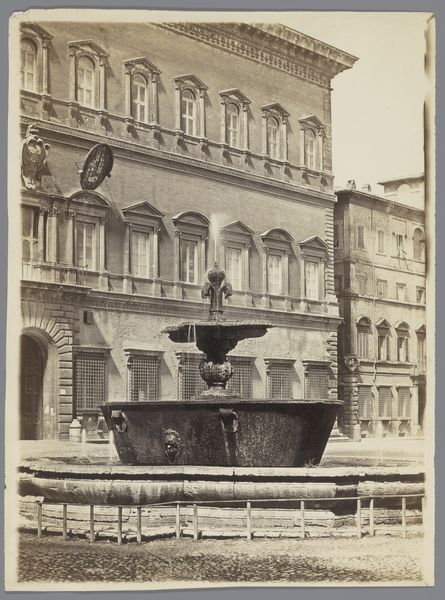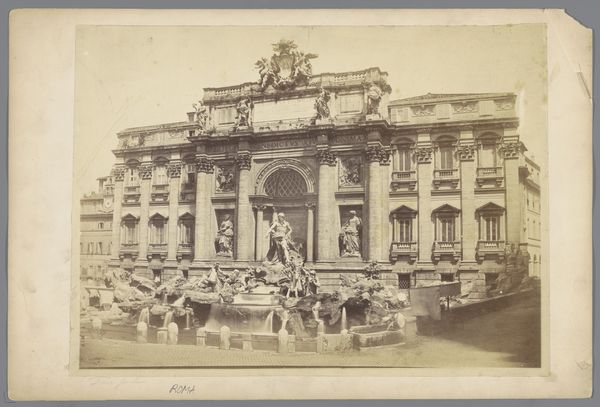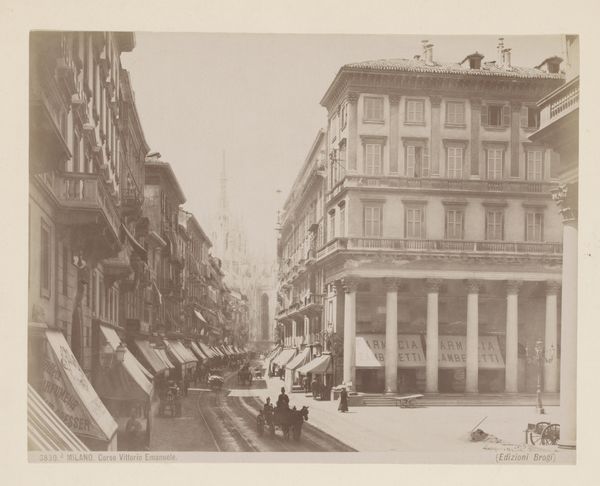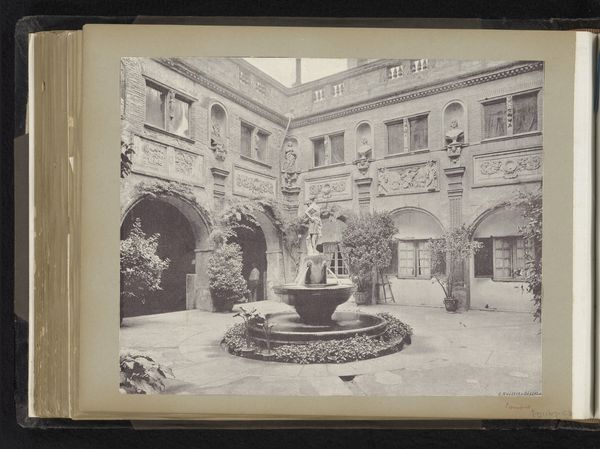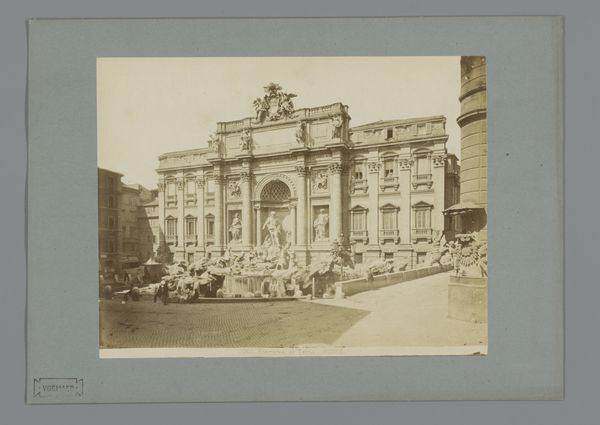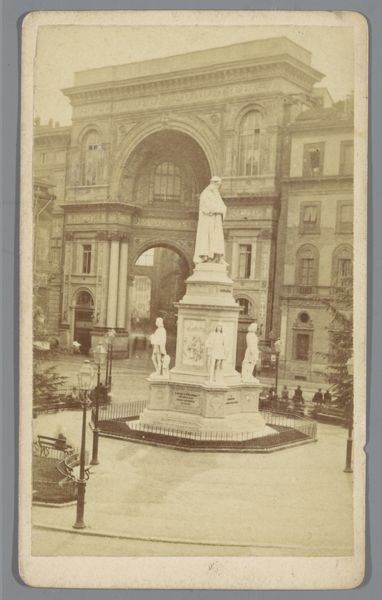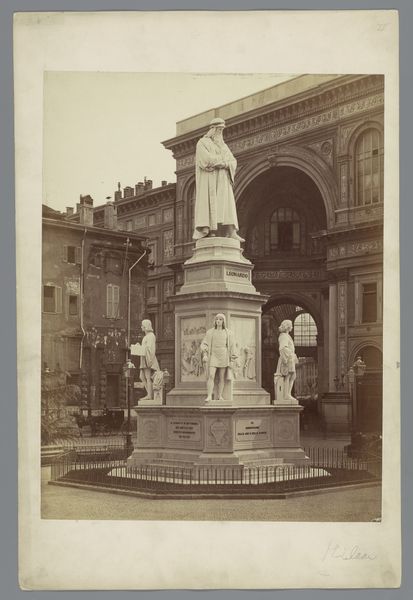
Dimensions: height 199 mm, width 248 mm
Copyright: Rijks Museum: Open Domain
Curator: What a classically beautiful vista! Editor: Agreed. It almost feels too perfect, like a staged movie set instead of an organic cityscape. Curator: We're looking at a photograph, "Trevifontein te Rome," putting us sometime between 1851 and 1900, capturing the Trevi Fountain. Notice the gelatin-silver print used in the photographic process. The choice of materials in photographic prints like this reflects both aesthetic and practical considerations during the period. Editor: I'm struck by the composition—the stark geometry of the building juxtaposed with the wild, baroque exuberance of the fountain. And that blurred effect of the water, suggesting constant motion frozen in time, thanks to photographic materials available back then. The contrasts emphasize a certain dynamic tension, right? Curator: Certainly. It also reflects the era’s views of labor: Consider how this contrasts human-made static architecture against freely flowing elements. How are laborers engaged to maintain such a grand fountain versus laborers living in cramped apartments next door, or further beyond the camera’s perspective. It all seems tied to specific societal roles and expectations of beauty and luxury. Editor: I do like how the photographer framed it though! The shadows give such depth, pulling you into the scene despite the rather limited tonal range characteristic of older prints. Those statues on the fountain— Neptune perhaps?—almost seem to come alive with drama. Curator: I am much more keen about whether the workers in this region were granted artistic license as it pertains to water use, or where such fountains and public gathering places truly designed with public benefit as it claims. The narrative it builds in our collective imaginaries says as much. Editor: Interesting angle! But I feel it is in that tension of historical record against a created reality of luxury and design in plain sight. The picture asks as much of you. Thank you, Curator, for sharing the materiality-bound social context that informs its historical era and its complex meanings. Curator: And thank you for drawing us closer to understand its place within our culture.
Comments
No comments
Be the first to comment and join the conversation on the ultimate creative platform.
